Sci-Tech
How Mark Zuckerberg’s Meta Failed Children on Safety, States Say

In April 2019, David Ginsberg, a Meta executive, emailed his boss, Mark Zuckerberg, with a proposal to research and reduce loneliness and compulsive use on Instagram and Facebook.
In the email, Mr. Ginsberg noted that the company faced scrutiny for its products’ impacts “especially around areas of problematic use/addiction and teens.” He asked Mr. Zuckerberg for 24 engineers, researchers and other staff, saying Instagram had a “deficit” on such issues.
A week later, Susan Li, now the company’s chief financial officer, informed Mr. Ginsberg that the project was “not funded” because of staffing constraints. Adam Mosseri, Instagram’s head, ultimately declined to finance the project, too.
The email exchanges are just one slice of evidence cited among more than a dozen lawsuits filed since last year by the attorneys general of 45 states and the District of Columbia. The states accuse Meta of unfairly ensnaring teenagers and children on Instagram and Facebook while deceiving the public about the hazards. Using a coordinated legal approach reminiscent of the government’s pursuit of Big Tobacco in the 1990s, the attorneys general seek to compel Meta to bolster protections for minors.
A New York Times analysis of the states’ court filings — including roughly 1,400 pages of company documents and correspondence filed as evidence by the State of Tennessee — shows how Mr. Zuckerberg and other Meta leaders repeatedly promoted the safety of the company’s platforms, playing down risks to young people, even as they rejected employee pleas to bolster youth guardrails and hire additional staff.
In interviews, the attorneys general of several states suing Meta said Mr. Zuckerberg had led his company to drive user engagement at the expense of child welfare.
“A lot of these decisions ultimately landed on Mr. Zuckerberg’s desk,” said Raúl Torrez, the attorney general of New Mexico. “He needs to be asked explicitly, and held to account explicitly, for the decisions that he’s made.”
The state lawsuits against Meta reflect mounting concerns that teenagers and children on social media can be sexually solicited, harassed, bullied, body-shamed and algorithmically induced into compulsive online use. Last Monday, Dr. Vivek H. Murthy, the United States surgeon general, called for warning labels to be placed on social networks, saying the platforms present a public health risk to young people.
His warning could boost momentum in Congress to pass the Kids Online Safety Act, a bill that would require social media companies to turn off features for minors, like bombarding them with phone notifications, that could lead to “addiction-like” behaviors. (Critics say the bill could hinder minors’ access to important information. The News/Media Alliance, a trade group that includes The Times, helped win an exemption in the bill for news sites and apps that produce news videos.)
In May, New Mexico arrested three men who were accused of targeting children for sex after, Mr. Torrez said, they solicited state investigators who had posed as children on Instagram and Facebook. Mr. Torrez, a former child sex crimes prosecutor, said Meta’s algorithms enabled adult predators to identify children they would not have found on their own.
Meta disputed the states’ claims and has filed motions to dismiss their lawsuits.
In a statement, Liza Crenshaw, a spokeswoman for Meta, said the company was committed to youth well-being and had many teams and specialists devoted to youth experiences. She added that Meta had developed more than 50 youth safety tools and features, including limiting age-inappropriate content and restricting teenagers under 16 from receiving direct messages from people they didn’t follow.
“We want to reassure every parent that we have their interests at heart in the work we’re doing to help provide teens with safe experiences online,” Ms. Crenshaw said. The states’ legal complaints, she added, “mischaracterize our work using selective quotes and cherry-picked documents.”
But parents who say their children died as a result of online harms challenged Meta’s safety assurances.
“They preach that they have safety protections, but not the right ones,” said Mary Rodee, an elementary school teacher in Canton, N.Y., whose 15-year-old son, Riley Basford, was sexually extorted on Facebook in 2021 by a stranger posing as a teenage girl. Riley died by suicide several hours later.
Ms. Rodee, who sued the company in March, said Meta had never responded to the reports she submitted through automated channels on the site about her son’s death.
“It’s pretty unfathomable,” she said.
The Push to Win Teenagers
Meta has long wrestled with how to attract and retain teenagers, who are a core part of the company’s growth strategy, internal company documents show.
Teenagers became a major focus for Mr. Zuckerberg as early as 2016, according to the Tennessee complaint, when the company was still known as Facebook and owned apps including Instagram and WhatsApp. That spring, an annual survey of young people by the investment bank Piper Jaffray reported that Snapchat, a disappearing-message app, had surpassed Instagram in popularity.
Later that year, Instagram introduced a similar disappearing photo- and video-sharing feature, Instagram Stories. Mr. Zuckerberg directed executives to focus on getting teenagers to spend more time on the company’s platforms, according to the Tennessee complaint.
The “overall company goal is total teen time spent,” wrote one employee, whose name is redacted, in an email to executives in November 2016, according to internal correspondence among the exhibits in the Tennessee case. Participating teams should increase the number of employees dedicated to projects for teenagers by at least 50 percent, the email added, noting that Meta already had more than a dozen researchers analyzing the youth market.
In April 2017, Kevin Systrom, Instagram’s chief executive, emailed Mr. Zuckerberg asking for more staff to work on mitigating harms to users, according to the New Mexico complaint.
Mr. Zuckerberg replied that he would include Instagram in a plan to hire more staff, but he said Facebook faced “more extreme issues.” At the time, legislators were criticizing the company for having failed to hinder disinformation during the 2016 U.S. presidential campaign.
Mr. Systrom asked colleagues for examples to show the urgent need for more safeguards. He soon emailed Mr. Zuckerberg again, saying Instagram users were posting videos involving “imminent danger,” including a boy who shot himself on Instagram Live, the complaint said.
Two months later, the company announced that the Instagram Stories feature had hit 250 million daily users, dwarfing Snapchat. Mr. Systrom, who left the company in 2018, didn’t respond to a request for comment.
Meta said an Instagram team developed and introduced safety measures and experiences for young users. The company didn’t respond to a question about whether Mr. Zuckerberg had provided the additional staff.
‘Millions’ of Underage Users
In January 2018, Mr. Zuckerberg received a report estimating that four million children under the age of 13 were on Instagram, according to a lawsuit filed in federal court by 33 states.
Facebook’s and Instagram’s terms of use prohibit users under 13. But the company’s sign-up process for new accounts enabled children to easily lie about their age, according to the complaint. Meta’s practices violated a federal children’s online privacy law requiring certain online services to obtain parental consent before collecting personal data, like contact information, from children under 13, the states allege.
In March 2018, The Times reported that Cambridge Analytica, a voter profiling firm, had covertly harvested the personal data of millions of Facebook users. That set off more scrutiny of the company’s privacy practices, including those involving minors.
Mr. Zuckerberg testified the next month at a Senate hearing, “We don’t allow people under the age of 13 to use Facebook.”
Attorneys general from dozens of states disagree.
In late 2021, Frances Haugen, a former Facebook employee, disclosed thousands of pages of internal documents that she said showed the company valued “profit above safety.” Lawmakers held a hearing, grilling her on why so many children had accounts.
Meanwhile, company executives knew that Instagram use by children under 13 was “the status quo,” according to the joint federal complaint filed by the states. In an internal chat in November 2021, Mr. Mosseri acknowledged those underage users and said the company’s plan to “cater the experience to their age” was on hold, the complaint said.
In its statement, Meta said Instagram had measures in place to remove underage accounts when the company identified them. Meta has said it has regularly removed hundreds of thousands of accounts that could not prove they met the company’s age requirements.
Fighting Over Beauty Filters
A company debate over beauty filters on Instagram encapsulated the internal tensions over teenage mental health — and ultimately the desire to engage more young people prevailed.
It began in 2017 after Instagram introduced camera effects that enabled users to alter their facial features to make them look funny or “cute/pretty,” according to internal emails and documents filed as evidence in the Tennessee case. The move was made to boost engagement among young people. Snapchat already had popular face filters, the emails said.
But a backlash ensued in the fall of 2019 after Instagram introduced an appearance-altering filter, Fix Me, which mimicked the nip/tuck lines that cosmetic surgeons draw on patients’ faces. Some mental health experts warned that the surgery-like camera effects could normalize unrealistic beauty standards for young women, exacerbating body-image disorders.
As a result, Instagram in October 2019 temporarily disallowed camera effects that made dramatic, surgical-looking facial alterations — while still permitting obviously fantastical filters, like goofy animal faces. The next month, concerned executives proposed a permanent ban, according to Tennessee court filings.
Other executives argued that a ban would hurt the company’s ability to compete. One senior executive sent an email saying Mr. Zuckerberg was concerned whether data showed real harm.
In early 2020, ahead of an April meeting with Mr. Zuckerberg to discuss the issue, employees prepared a briefing document on the ban, according to the Tennessee court filings. One internal email noted that employees had spoken with 18 mental health experts, each of whom raised concerns that cosmetic surgery filters could “cause lasting harm, especially to young people.”
But the meeting with Mr. Zuckerberg was canceled. Instead, the chief executive told company leaders that he was in favor of lifting the ban on beauty filters, according to an email he sent that was included in the court filings.
Several weeks later, Margaret Gould Stewart, then Facebook’s vice president for product design and responsible innovation, reached out to Mr. Zuckerberg, according to an email included among the exhibits. In the email, she noted that as a mother of teenage daughters, she knew social media put “intense” pressure on girls “with respect to body image.”
Ms. Stewart, who subsequently left Meta, did not respond to an email seeking comment.
In the end, Meta said it barred filters “that directly promote cosmetic surgery, changes in skin color or extreme weight loss” and clearly indicated when one was being used.
Priorities and Youth Safety
In 2021, Meta began planning for a new social app. It was to be aimed specifically at children and called Instagram Kids. In response, 44 attorneys general wrote a letter that May urging Mr. Zuckerberg to “abandon these plans.”
“Facebook has historically failed to protect the welfare of children on its platforms,” the letter said.
Meta subsequently paused plans for an Instagram Kids app.
By August, company efforts to protect users’ well-being work had become “increasingly urgent” for Meta, according to another email to Mr. Zuckerberg filed as an exhibit in the Tennessee case. Nick Clegg, now Meta’s head of global affairs, warned his boss of mounting concerns from regulators about the company’s impact on teenage mental health, including “potential legal action from state A.G.s.”
Describing Meta’s youth well-being efforts as “understaffed and fragmented,” Mr. Clegg requested funding for 45 employees, including 20 engineers.
In September 2021, The Wall Street Journal published an article saying Instagram knew it was “toxic for teen girls,” escalating public concerns.
An article in The Times that same month mentioned a video that Mr. Zuckerberg had posted of himself riding across a lake on an “electric surfboard.” Internally, Mr. Zuckerberg objected to that description, saying he was actually riding a hydrofoil he pumped with his legs and wanted to post a correction on Facebook, according to employee messages filed in court.
Mr. Clegg found the idea of a hydrofoil post “pretty tone deaf given the gravity” of recent accusations that Meta’ s products caused teenage mental health harms, he said in a text message with communications executives included in court filings.
Mr. Zuckerberg went ahead with the correction.
In November 2021, Mr. Clegg, who had not heard back from Mr. Zuckerberg about his request for more staff, sent a follow-up email with a scaled-down proposal, according to Tennessee court filings. He asked for 32 employees, none of them engineers.
Ms. Li, the finance executive, responded a few days later, saying she would defer to Mr. Zuckerberg and suggested that the funding was unlikely, according to an internal email filed in the Tennessee case. Meta didn’t respond to a question about whether the request had been granted.
A few months later, Meta said that although its revenue for 2021 had increased 37 percent to nearly $118 billion from a year earlier, fourth-quarter profit plummeted because of a $10 billion investment in developing virtual reality products for immersive realms, known as the metaverse.
Explicit Videos Involving Children
Last fall, the Match Group, which owns dating apps like Tinder and OKCupid, found that ads the company had placed on Meta’s platforms were running adjacent to “highly disturbing” violent and sexualized content, some of it involving children, according to the New Mexico complaint. Meta removed some of the posts flagged by Match, telling the dating giant that “violating content may not get caught a small percentage of the time,” the complaint said.
Dissatisfied with Meta’s response, Bernard Kim, the chief executive of the Match Group, reached out to Mr. Zuckerberg by email with a warning, saying his company could not “turn a blind eye,” the complaint said.
Mr. Zuckerberg didn’t respond to Mr. Kim, according to the complaint.
Meta said the company had spent years building technology to combat child exploitation.
Last month, a judge denied Meta’s motion to dismiss the New Mexico lawsuit. But the court granted a request regarding Mr. Zuckerberg, who had been named as defendant, to drop him from the case.
Sci-Tech
$10,000 cooler designed with AI keeps Core i9-14900KF chilly at 7.5 GHz

Pushing the limits: Enthusiasts are always looking for an edge in the world of overclocking and extreme cooling. In this wild test, the team sought to determine whether advanced GenAI and 3D printing could help them squeeze out more performance from today’s processors. To answer this, they built a liquid nitrogen (LN2) container in a whole new way – and arrived at some interesting conclusions.
The project brought together experts from across the ecosystem – Skatterbencher who’s renowned for overclocking prowess; Diabatix, specializing in generative AI for thermal solutions; 3D Systems for additive manufacturing; and finally ElmorLabs for overclocking gear.
The team took ElmorLabs’ existing Volcano LN2 container as a reference point, then tasked Diabatix’s ColdStream Next AI to generate an improved design. 3D Systems then brought that digital blueprint to life, 3D printing a prototype using oxygen-free copper powder. Shockingly though, the cutting-edge process commanded a steep $10,000 price tag – a far cry from the $260 cost of the original Volcano.
The AI/3D printed design showed promise in early testing, focusing on three key metrics: cool-down time from room temperature to -194°C, heat-up time from -194°C to 20°C under a 1250W load, and the lowest temperature achieved using 500mL of liquid nitrogen.
It blew past the Volcano in cool-down speed, chilling from 28°C to -194°C in under a minute compared to the Volcano’s 3-minute pace. Heat-up performance was better too, with the AI container warming up 30% faster. Efficiency also favored the AI design – using 500mL of LN2, it hit -133°C, while the Volcano stopped short at -100°C.
However, since these tests do not represent real-world performance, the team decided to run three more using the Intel Core i9-14900KF Raptor Lake processor. First, they fired up Cinebench 2024 to find the most stable maximum CPU frequency.
“We find that both LN2 containers can handle the Core i9-14900KF with P-cores clocked to 7.4 GHz without any issue. It seemed the AI-generated design could perhaps hold 7.5 GHz just a tad longer. But that might just be run-to-run variation,” they noted.
In the second test, they checked the CPU temperature deltas between the heat spreader and cooling container base to assess real heat transfer capabilities. There was also an all-out stress test, pushing over 600W through the chip for several minutes.
While the AI container did pull ahead a smidge, the gains were relatively muted compared to the theoretical test results. Temperature deltas between the CPU heat spreader and container base were tighter on the 3D-printed model, but not by an earth-shattering margin. Even the performance uplift in Cinebench was fairly modest, as seen above.
After crunching the numbers, the team determined that while technically impressive, the AI/3D printed design currently doesn’t pencil out from a cost/benefit perspective for modest overclocking scenarios. Not with that $10,000 price tag.
However, they are not done yet. While “nothing concrete” is in hand, the team says they could look into performance and cost optimizations. The design of the LN2 container doesn’t necessarily need to be circular, for example. They are also exploring new designs for higher-power CPUs like the Ryzen Threadripper or Intel’s Xeon 6.
All in all, the feasibility study may have exposed some limitations, but it also proved generative AI has better uses than simply churning out six-fingered models.
Sci-Tech
Microsoft resumes rollout of Windows 11 KB5039302 update for most users

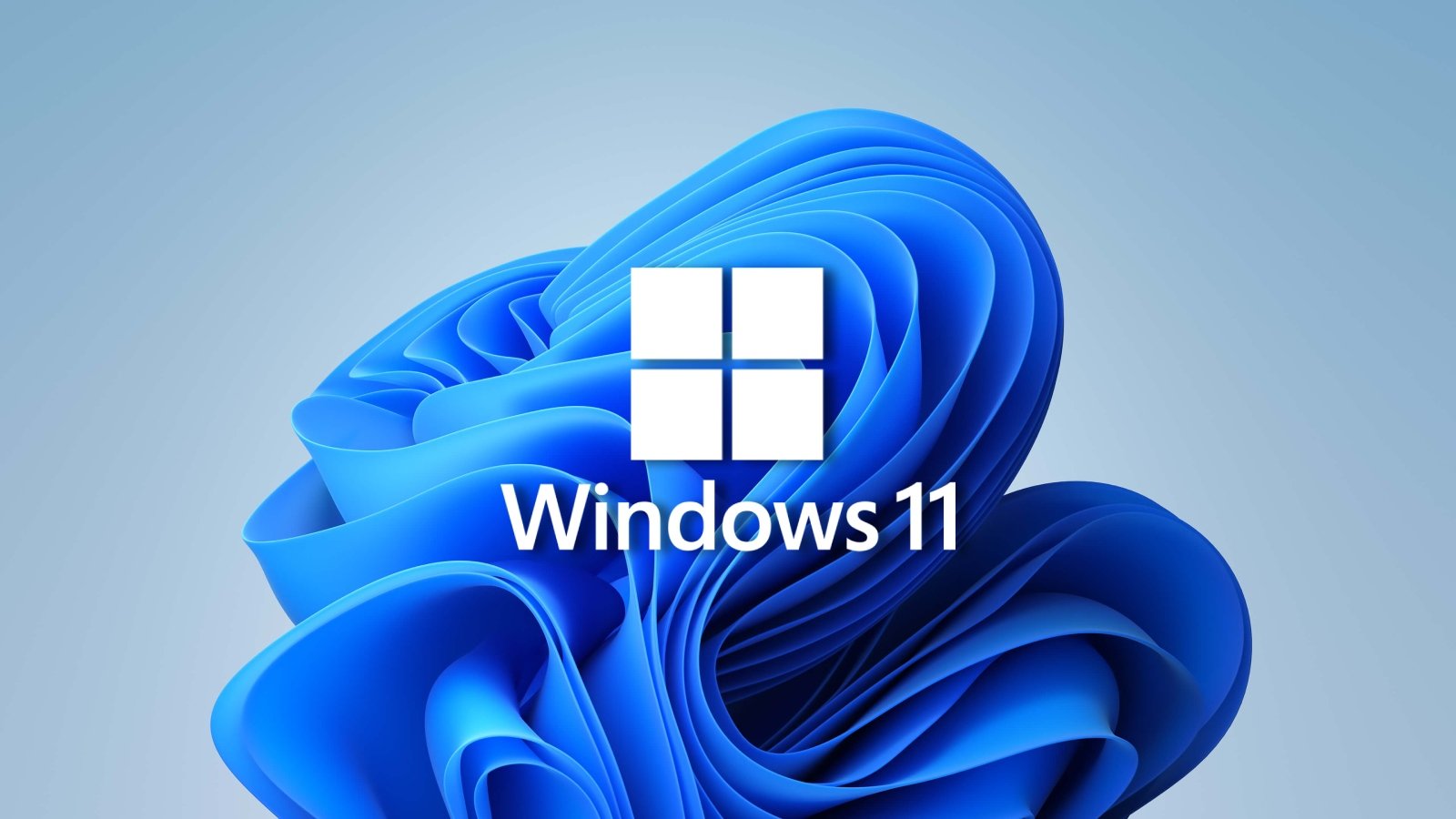
Microsoft has resumed the rollout of the June Windows 11 KB5039302 update, now blocking the update only for those using virtualization software.
On Wednesday, Microsoft pulled the KB5039302 update after Windows 11 users found that their devices went into a reboot loop after it was installed.
After investigating the issue, Microsoft determined that the bug mostly affects devices that utilize virtual machine tools and nested virtualization features, such as CloudPC, DevBox, and Azure Virtual Desktop. Others stated it also affected VMware.
Yesterday, in an update to Windows Message Center, Microsoft once again resumed rolling out the KB5039302 update to those not running virtualization software.
“Availability of this update via Windows Update and Windows Update for Business was paused for a couple of days, but is being resumed today for most devices,” reads the message center update.
“This update offering is now paused only for devices affected by the issue. As a result, this update might not be offered to Hyper-V virtual machines running on hosts that utilize certain processor types.”
Those who wish to install the update can now run Windows Update and install it as usual.
However, this update comes with another bug that causes the Taskbar not to display properly if you are using Windows N edition or have the ‘Media Features’ feature turned off in Control Panel > Programs > Programs and Features > Turn Windows features on or off.
Therefore, if you have disabled the Media Features or are running Windows N, which does not contain media-related technologies, you may want to hold off installing the update.
Microsoft is working on fixing both issues and will provide them in an upcoming release.
Sci-Tech
Is T-Mobile still the uncarrier we knew and loved, or just another carrier?

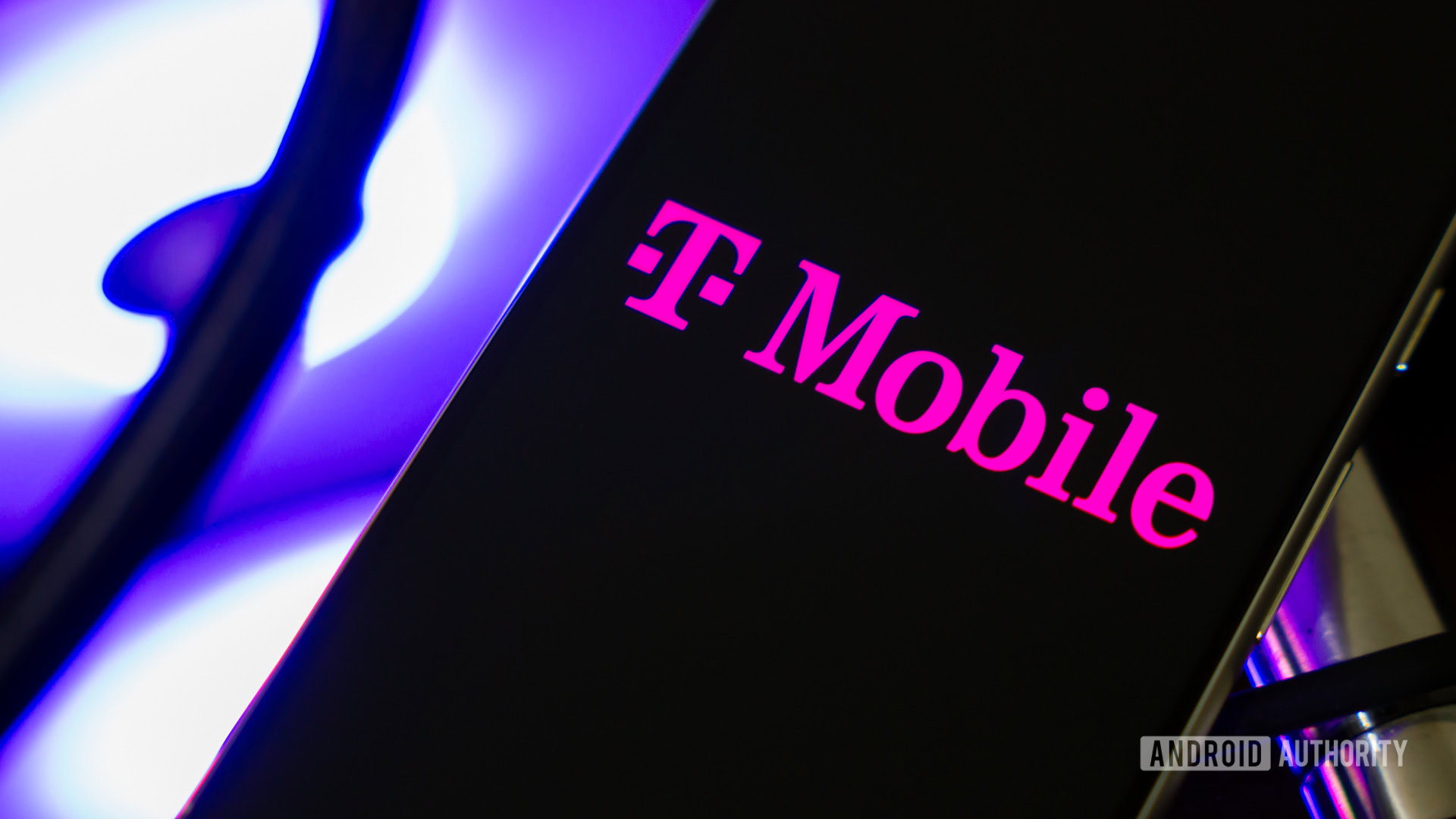
Edgar Cervantes / Android Authority
In 2012, the wireless industry was in a less-than-ideal state. AT&T and Verizon dominated the market, despite a reputation for price gouging. Meanwhile, Sprint and T-Mobile lagged behind in third and fourth place, respectively. In an effort to change its trajectory, T-Mobile hired John Legere as CEO. Legere wasn’t your typical corporate suit. He wore jeans and T-shirts, and cursed like a sailor. He was also outspoken about the poor policies and practices of the larger wireless carriers, and actually made a ton of big changes to the company through the “Uncarrier” marketing initiative.
This campaign aimed to disrupt traditional industry practices, such as two-year contracts, hidden fees, and sudden price increases. These transformations occurred against the backdrop of a planned merger with Sprint, which was finalized in 2020 after extensive negotiations. Fast forward to today, and the new T-Mobile now largely resembles the very companies Legere once vocally opposed.
Is T-mobile still the uncarrier you knew and loved?
64 votes
T-Mobile is starting to look a little like Verizon 2.0
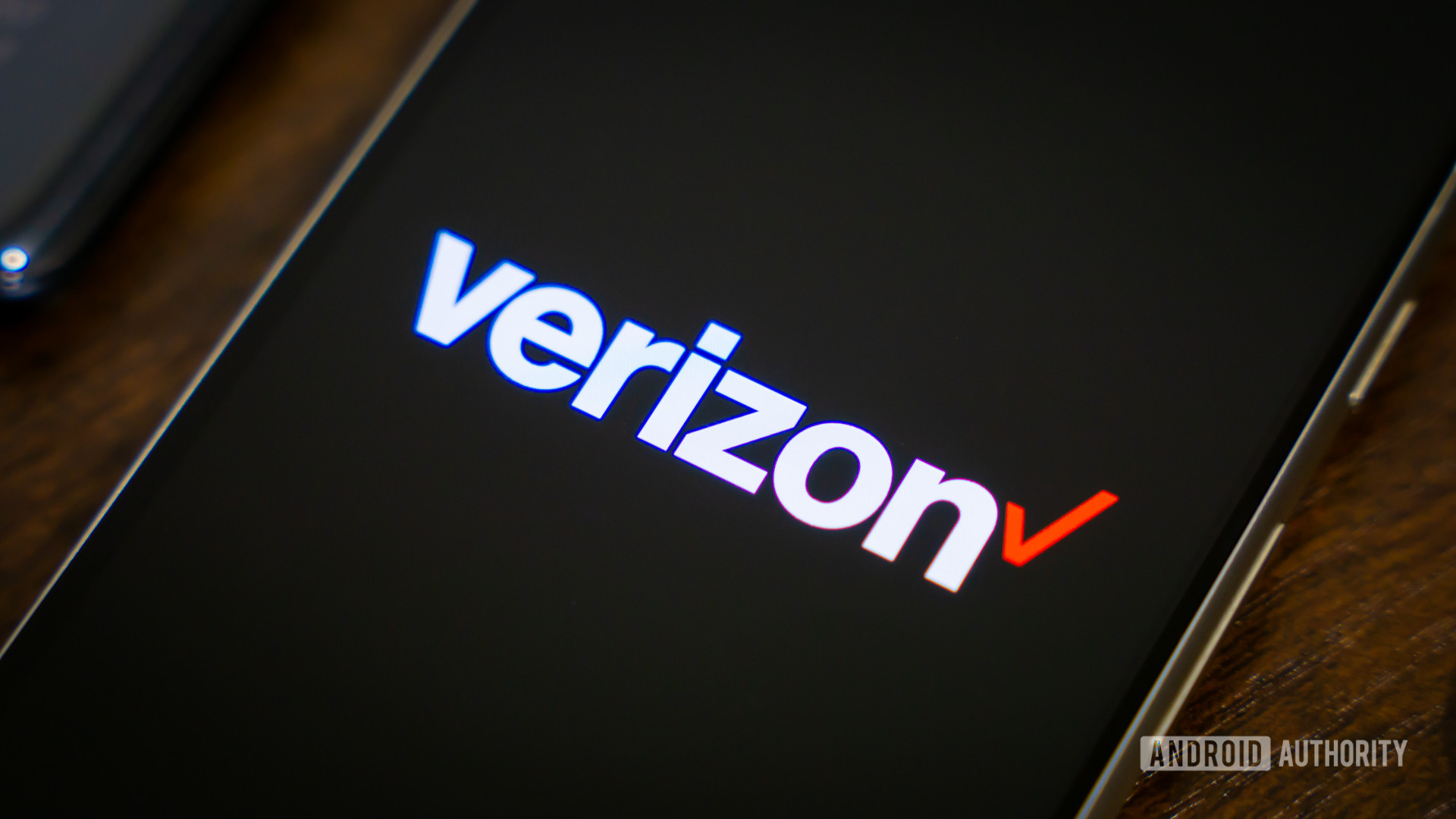
Edgar Cervantes / Android Authority
There were many things T-Mobile criticized its competitors for, but pricing and clarity were chief among Legere’s concerns. In much softer words than he actually used, Legere once essentially accused Verizon and AT&T of being crooks who were taking us for every last cent. That’s just a bit ironic when you consider T-Mobile’s moves over the last few years. While the pandemic naturally drove up pricing, which is more forgivable, T-Mobile’s treatment of legacy customers is not.
First, T-Mobile attempted to automatically shift its legacy customers to newer plans unless the customer specifically contacted them to opt out. When this didn’t work, it ultimately ended up raising legacy pricing anyway, increasing prices by $5 per month per line for voice plans, and $2 per month per line for connected devices. It was also a slap in the face for customers who thought T-Mobile’s earlier Price Lock policies protected them.
T-Mobile used to offer some of the best phone deals, but these days, many of its top free phone offers are typically aimed exclusively at Go5G Plus and Next subscribers. Similarly, T-Mobile Tuesdays used to feature truly great exclusive discounts and promotions for events and much more. This experience has largely devolved into a very limited coupon book app, and many fear this will only worsen with the new T-Life direction.
Those are far from the only changes T-Mobile has made recently that go against the spirit of its Uncarrier movement. In April we learned T-Mobile could be profiling customers and collecting personal data to better predict user behavior. While this is an opt-out feature, I am willing to bet Legere’s T-Mobile would have never even tried something like this.
T-Mobile’s recent price increases and unclear customer changes are exactly the sort of things Legere once criticized Verizon and AT&T for.
Continuing its long line of moves that certainly aren’t customer-first in nature, T-Mobile recently clarified that its pricing could continue to increase, even for Price Lock customers. It also clarified that despite still using the name, T-Mobile customers with a plan from January 17, 2024 are actually on Price Lock 2.0. This newer version will refund you if you cancel due to price increases, but there’s really no promise it won’t continue to jack up prices.
Still not convinced this isn’t the same T-Mobile we all once gushed about? A new bill credits policy might just be enough to put you over the edge. The new policy means you’ll no longer receive bill credits for a free device if you decide to pay off the installment plan early. In other words, if you buy off your plan early, you lose out on your free phone deal.
T-Mobile is likely doing this to prevent customers from paying off a device early and then turning around and selling it for a high price. Before, you could sell the device and remove the installment plan while still receiving any free credits T-Mobile owed you.
All of this shows a carrier that is clearly not concerned with price increases or moves that are seen as less friendly by its existing customer base. This is exactly what Verizon and AT&T have been accused of doing. What makes T-Mobile feel even more like Verizon is that it seems to have set its sights on being the biggest and most powerful carrier.
It’s important to remember the Uncarrier phase was marketing first and foremost
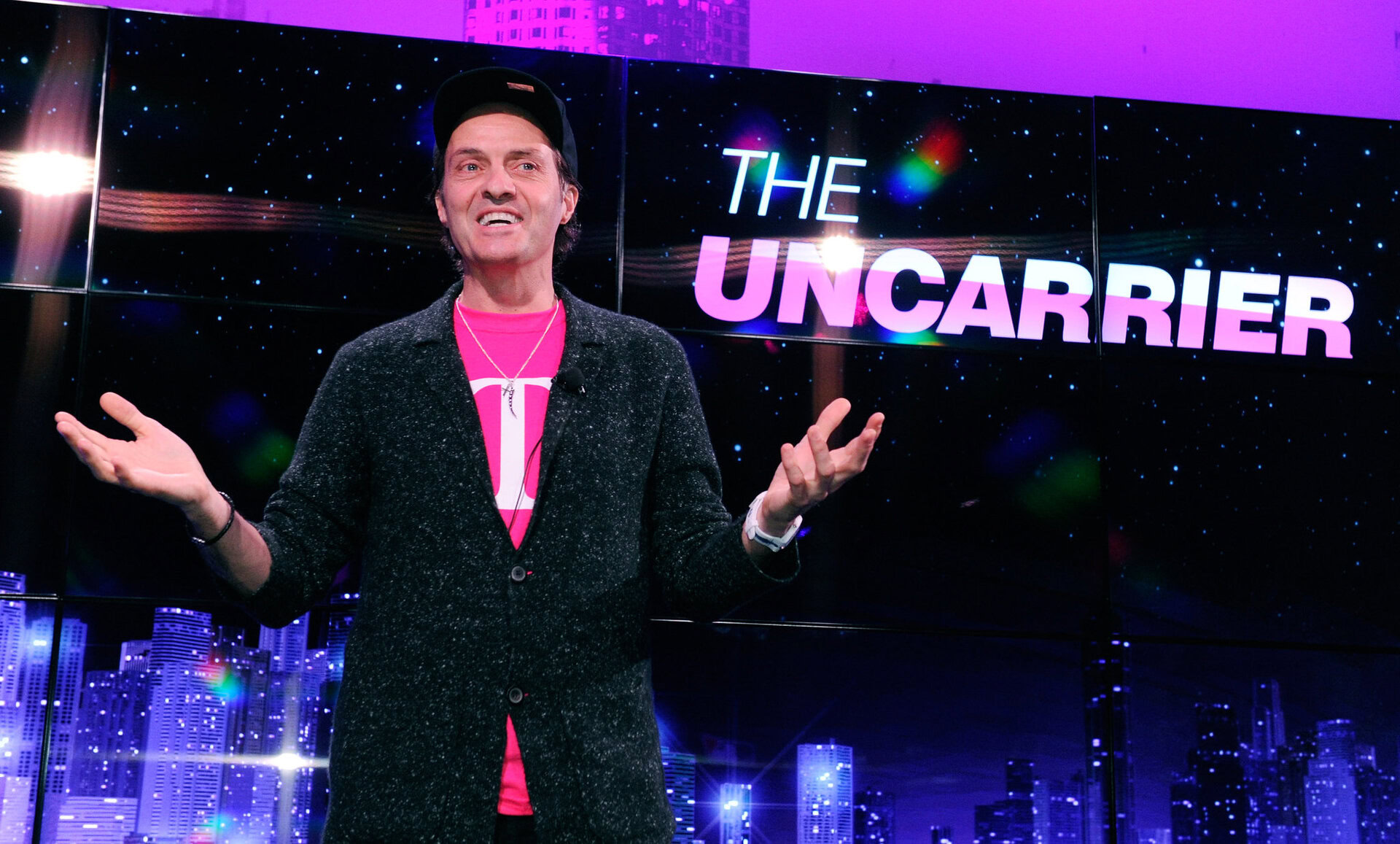
I’ve noticed numerous online comments portraying John Legere as a hero, while Mike Sievert is blamed for T-Mobile’s recent shifts. However, it’s essential to recognize that the Uncarrier movement was primarily a marketing strategy. Legere was hired to revitalize the company, which he effectively did by adopting a relatable image, aggressively cutting costs, and disrupting the industry. But he didn’t do it because he was your friend. These were calculated business decisions.
Legere did his job well, and I respect him for that. However, I also understand how business works. T-Mobile knew that the changes under Legere’s leadership were only a temporary phase. After being promoted to COO, Mike Sievert and John Legere likely developed their strategy extensively. Phase 1 was focused on winning new customers and improving the network to compete with the major carriers. Phase 2 involved tightening the screws to generate real profits and secure T-Mobile’s position as one of the Big Three.
Legere was hired for a job and did it very well. So was Sievert: to make a profit at any cost.
Whether we like it or not, Mike Sievert was also hired for a specific purpose: to take this revitalized company and ensure it remains profitable both now and in the future. He has become the villain by raising prices and ensuring profitability even at the cost of customer satisfaction. It’s a less appealing role, but that doesn’t mean he isn’t doing his job. It’s a delicate balance — maintaining profitability while mitigating potential subscriber losses. T-Mobile likely anticipated some would leave once it was clear that the old Uncarrier days were over, but they planned ahead as best they could by acquiring the most prominent T-Mobile-based carriers.
Our own polls suggest that many of our tech-savvy readers are seriously considering switching to another carrier or even a prepaid service. Those who leave will likely seek coverage at least as good as what they had. If they were satisfied with the Uncarrier’s coverage, switching to Mint or another T-Mobile MVNO is an easy move. For every customer that switches away, a significant portion will still indirectly contribute to T-Mobile’s revenue. T-Mobile also anticipates that major customer losses are less likely among the elderly, large families, or those who are less tech-savvy and hesitant to switch.
Is T-Mobile actually any worse than the other members of the big three?
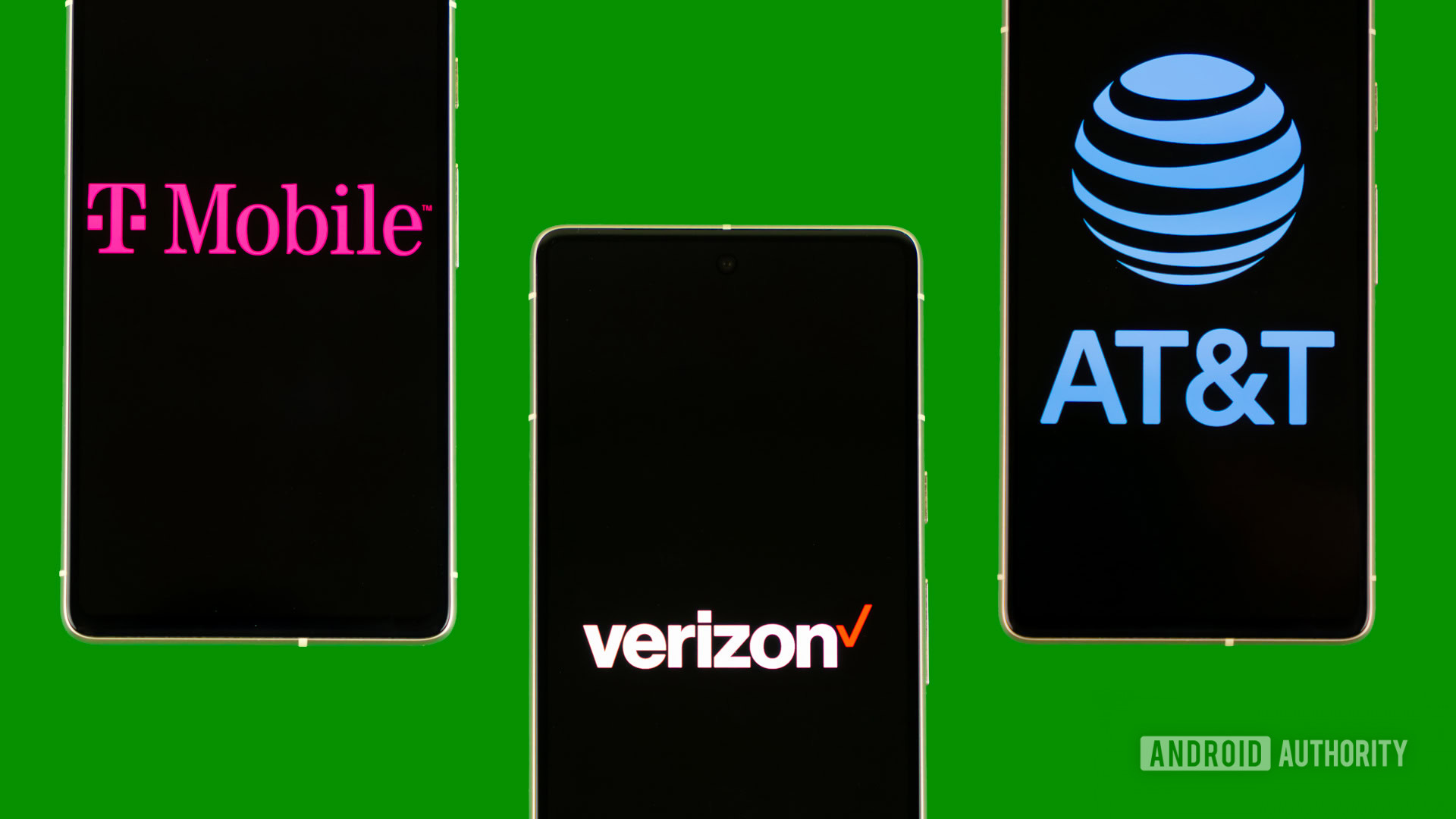
Edgar Cervantes / Android Authority
The big question is whether T-Mobile is any worse than the other members of the big three, and to answer that, I’d say no. The new T-Mobile actually holds a few strong advantages over the competition. While AT&T and Verizon spread device payments over three whole years, T-Mobile still defaults to 24 months. T-Mobile also offers slightly more competitive pricing, especially for larger families. It also has an increasingly strong and reliable network — customer service and pricing aside. The main takeaway is that it’s no longer the “uncarrier” we once knew; it’s now more just “another member of the big three,” for better or worse.
For many, T-Mobile might still be the best of the big three. However, for most, I’d suggest moving to one of the many excellent prepaid services, which have evolved considerably over the years. Some prepaid carriers, like Google Fi Wireless, offer the same high-quality data, device payment plans, and other features typically associated with postpaid services.
-

 African History5 years ago
African History5 years agoA Closer Look: Afro-Mexicans 🇲🇽
-

 African History5 months ago
African History5 months agoBlack History Facts I had to Learn on My Own pt.6 📜
-

 African History5 years ago
African History5 years agoA Closer Look: Afro-Mexicans 🇲🇽
-

 African History1 year ago
African History1 year agoMajor African Tribes taken away during the Atlantic Slave Trade🌍 #slavetrade #africanamericanhistory
-

 African History1 year ago
African History1 year agoPROOF AFRICAN AMERICANS AIN'T FROM AFRICA DOCUMENTED EVIDENCE
-

 African History1 year ago
African History1 year agoCameroon 🇨🇲 World Cup History (1962-2022) #football #realmadrid #shorts
-

 African History5 months ago
African History5 months agoBlack History Inventors: Mary Kenner 🩸
-

 African History4 months ago
African History4 months agoMr Incredible Becoming Canny/Uncanny Mapping (You live in Paraguay 🇵🇾)


























